~from Communications Coordinator Jill Salahub
Disclaimer: I went to graduate school with Jessica Patterson. She’s my friend. We met at a time in our lives that feels like “just before” somehow, and it’s been such a joy to keep in touch, to be friends as we’ve both continued to unravel and come back together. She was and remains one of my favorite humans, a friend and a mentor. I’ve wanted to profile her on the blog for awhile, finally asked and she was generous enough to sit down and answer some questions for me. She had so much share, more than a post’s worth, but forgive me, kind and gentle readers — I couldn’t bear to leave any of it out.
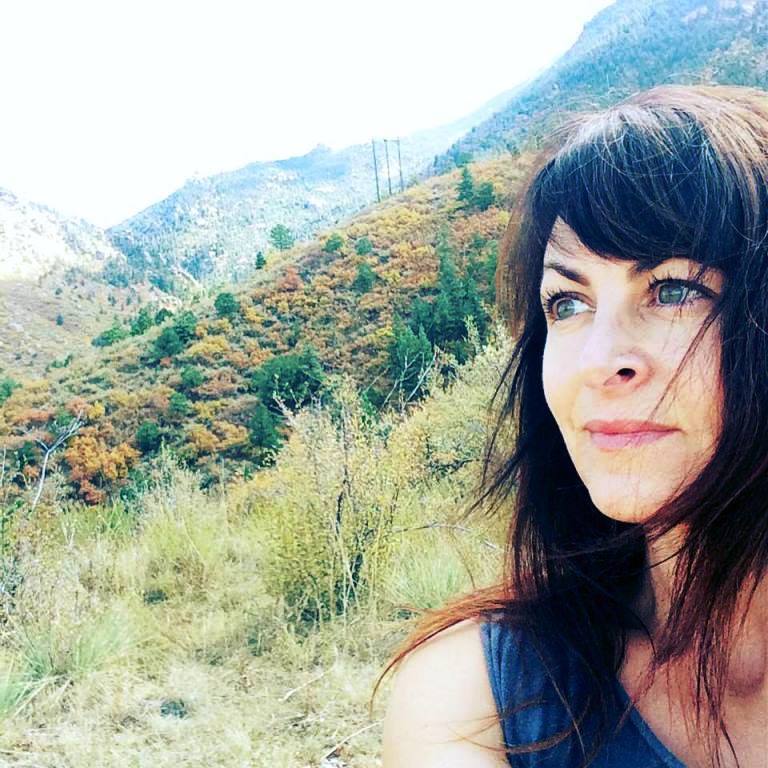
Jessica Patterson
Owner and Director of Root Center for Yoga & Sacred Studies in Colorado Springs
Director of the RootEducation (RootEd) 200-hour Apprenticeship & TT program
BA English (1999) and MA English: Communication Development (2004), Thesis: (Un)Becoming Human
I know that yoga is an important part of your life. How did you come to the practice? What has it meant to you?
I took my first yoga class my first semester of college in 1993. I had moved to Ithaca, NY to Cornell University, and it was an overwhelming time of change. There was a little yoga class offered as an extracurricular class, and I checked it out for the same reasons so many people are drawn initially to yoga: to reduce stress, gain flexibility, and shift things. My early practice was sporadic. I moved from NY back to CO, went to Michigan for a while (where I also took a class with a friend), lived in Peru for a stint, and then settled back in Fort Collins to complete my undergraduate work. I took classes pretty steadily from there, but it wasn’t until I was in graduate school (often commuting from Colorado Springs to Fort Collins) and working on my thesis that I began to rely more heavily on the accumulated benefits of my yoga practice.
My graduate research was a harrowing and stressful exploration of the world of non-human animal exploitation, so I was witnessing and taking in a lot of brutality. And then I would have these long drives up and down the I-25 corridor, past the factory farms and transport trucks that illustrated so painfully the invisibility of naturalized violence. The subject matter into which I was digging so deeply could leave a person feeling utterly helpless and disempowered. It is a daunting topic, and that was the first time I started to clarify how important it is not just to KNOW, but to empower someone with knowledge. So often, I would arrive home after a week of classes and research and I would just be wrecked….stressed out to the point that my throat would literally seize up and feel like I couldn’t swallow. So, I started practicing very diligently, making that time each day to help my body process what my mind was spinning around and around. So that is where it all kind of started.
But my practice really became a life line when my father died very suddenly the fall after I had completed my graduate work and was teaching Composition at The University of Colorado at Colorado Springs. On Thursday, Oct 21 2004, I was sitting in my office meeting with students and doing the usual schedule negotiations with my father via email to try and find time for us to talk. I suggested a date/time. He emailed back, “okey dokey,” and within 4 hours he would suffer a massive heart attack and die. It absolutely knocked my off my feet. Everything that had ever felt stable or grounded in me now felt shaky and fragile. Diffuse. I remember the shock of the days that followed and telling people I felt like I had no borders anymore. It was like the skin I was in had been shed and nothing was holding me together.
So, really, it was THAT experience, the experience of loss and the disruption of who I thought I was (or who I thought I was supposed to be) that plunged me more deeply into my practice of Yoga.
I tell students now that in loss and grief, time is often suspended, almost like we are tossed up into the air for a while. And in those moments, we can actually look around at our life and see it from a different perspective. To a certain extent, what UNmakes us can be the very thing that helps us recover a sense of ourselves that is less tenuous or performative. In other words, when the ground shakes beneath us, and we are tossed up into the air, we can sometimes decide how we want to land. In the months that followed, and eventually when my then husband and I decided to divorce and my beloved great dane was diagnosed with bone cancer, my daily practice was the one time I felt present and clear. It was this one tether to something steady and supportive. And the real power of that was the discovery that the steady ground was WITHIN, not without me. It wasn’t about gaining or attaining something. It was about being exquisitely present to something. Something messy and seemingly contradictory like grief and freedom. Or fear and courage. When you really come home to yourself, you find you are spacious enough to hold it all. I also think we find a kind of peaceful urgency; we tap that place in us that wants to live boldly NOW instead of living our days as mere means to an end. Yoga is largely about remembrance, the remembrance of who we really are (and the knowledge that that is enough), but it is often marketed and portrayed as a practice of performance. Through the practices of Yoga, we have the opportunity to show up for what IS (physically, emotionally, intellectually, energetically through the breath, and spiritually) and to cultivate a more intimate relationship with our lives. That demands presence, and THAT demands vulnerability and courage. So, in the wake of tremendous loss and transformation—death of a parent, divorce, death of my dog, moving, a scary crash of my endocrine system, and a major shift in careers—my practice became the one gossamer thread that stitched the wide unknown and seemingly eclectic spaces together.
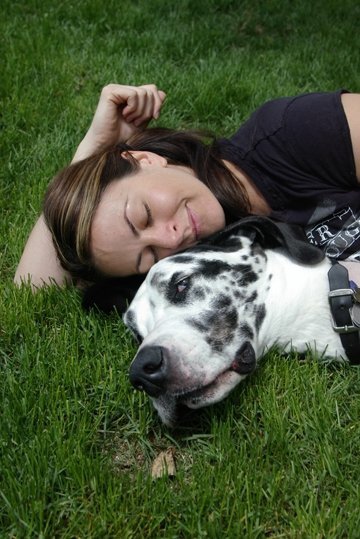
This is why I write and teach so often about the real practice beginning in savasana, the corpse pose, the final resting pose of a practice. Most people commit themselves to a practice like Yoga when something major has fallen away. People come home to themselves when something has unraveled. The many mini deaths of our lives are often what teach us to live. The practices of yoga make those deaths explicit and can help us navigate the process of letting go and letting life in.
What made you decide to become certified to teach?
Well, that is the continuation of the story above, I suppose. Let’s just say I had ZERO interest in becoming a “yoga teacher” when I took my first training. I was grieving the death of my dad, and I had looked around at my life and decided I wasn’t living according to that inner compass, that passion. So, I had left my position at UCCS and began to cobble together more education. I had been doing some freelance work for some various animal advocacy groups, and because of that work I was often asked by people to give them advice on shifting into vegetarian or vegan diets. I decided to study nutrition in order to augment that work, and while pursuing those studies, I signed up for my first teacher training program. Long an intense student of life and academia, I was drawn to a training as a way of deepening my own understanding of and access to the practices that had become so helpful to me in a time of tremendous uprooting. So, I said what so many people say: “I am just doing this for me. I don’t want to teach.” I could go into all the details, but suffice to say I was given the great honor (and terror) of being asked to sub for my own teacher right after I completed my program. And within 2 years, I would be teaching full time. I went on very quickly to pursue my 300-hour training with my teachers David Life and Sharon Gannon, the co-founders of Jivamukti Yoga and whose interest in and support of my graduate work had been pivotal in my approach to the “why” and “how” of Yoga.
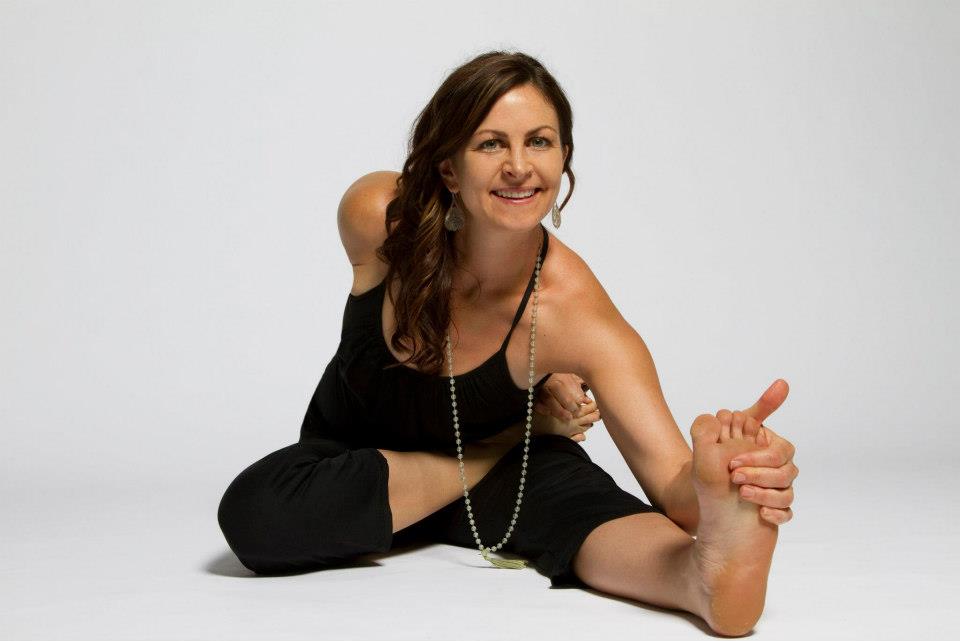
While I pursued many trainings through many styles and lineages, with many well known and lesser known teachers, the fact is that I ended up teaching because I was asked to. That is a simple answer, but the implications are weighty. Teaching, to paraphrase Paulo Friere, should empower people to create change, not just indoctrinate or homogenize them. In my own trajectory, that has meant paying attention to how and where my work—my insights, experiences, and contributions—can be most meaningful and relevant. In the tradition of Yoga, the teacher is that which shines light on what is. It isn’t piggy banking ones “knowledge” or the franchising of others to reproduce or replicate oneself. Education should liberate both teacher and student. When we are asked to teach, we are asked to learn twice. Three times. Taking the seat of the teacher is a lot about facing our own inner critics and our insecurities and “who the hell am I to be here?” voices and not letting that eclipse what you can offer. When we are called forward to teach, we meet ourselves. And the choice is to perform as a teacher or to empower as one. So, I began teaching (reluctantly) when I was asked to by those who saw something in me that I had not yet embraced. I taught for a number of training programs in CO, but eventually I had some students ask me to create a program of my own. I was humbled and insecure, but I stepped forward. The RootEd program is going into its 7th season, and it is still the heart of my favorite work. Intense, honest, real.
I often say that the most reluctant teachers are often the best teachers. Our capacity to move into something as transformational as intensive Self Study (the real gist of a training program) without projecting onto our future selves who or what we think we will be allows us to be fully present to the experience. It allows us to revise so much of what we take as internal gospel, and it enables us to get very clear and honest about what form or forum into which we are called. My students hear me say this ALL the time, but we don’t need more instructors teaching asana (physical practices of yoga) in studios. We need yogis in the world AS yogis. We need yogis as surgeons and politicians, as teachers and parents, as business owners and artists.
The real goal of a Yoga teacher is to see the person before you as whole and enough, as is. And you focus on that and draw upon as many techniques as you can to basically say, “Remember?” I am also a Yoga Therapist, and that focus is all the more critical; we meet people as inherently whole and our task is to remember, which is different from the conventional medical (and consumer) model that there is something essentially broken that needs to be fixed. A teacher doesn’t fix. A teacher reminds, calls forth, and supports what is already always whole and capable. The goal is to empower someone so that you render yourself obsolete. In the merchandised and commodified world of yoga-as-meme, teachers are too often models and actors, and the implicit (arguably explicit) message becomes “Look at me!” And that gets reinforced all the time by our culture of performance and competition, exacerbating and exploiting the feeling a person may have that they don’t have or are not enough.
But the essential job of a teacher of yoga, of guru (the force of illumination) is to say, gently, “look at YOU.” My teacher Mark Whitwell would remind us, “we should be falling down on our knees at the sight of one another.” That is the kind of reverence for and presence to one another, the kind of awe that is inspired by a practice (vs a performance) of yoga. We are inundated with messages all the time that exploit our sense of deficiency, seducing us into thinking our salvation is either in some future time (“when I get that salary or lose that weight or gain that attention”) or in the acquisition of something outside of us. The trick is, when you hang your sense of wholeness or center on something outside of you, it makes you even more vulnerable.
Two years ago, you opened your own yoga center, Root: Center for Yoga and Sacred Studies. Can you tell us more about that choice, that process?
It’s another long story, but the heart of it was that my own training program, RootEd needed a home that really embodied and fostered the spirit with which I teach . I had been traveling as a teacher, a gypsy of sorts, for a long time. I taught in others’ studios (from the very great to the very underbelly of the yoga world) and all over the world (including a summer residency in Taipei). I was ready to come home in the truest sense, and I was tired of renting other people’s spaces or being subject to someone else’s vision. I certainly didn’t think this town needed another asana-based studio. So, my goal wasn’t to open a space that was in competition with or a reproduction of what was already being offered. Again, I wanted my work, my contribution to be meaningful and relevant.
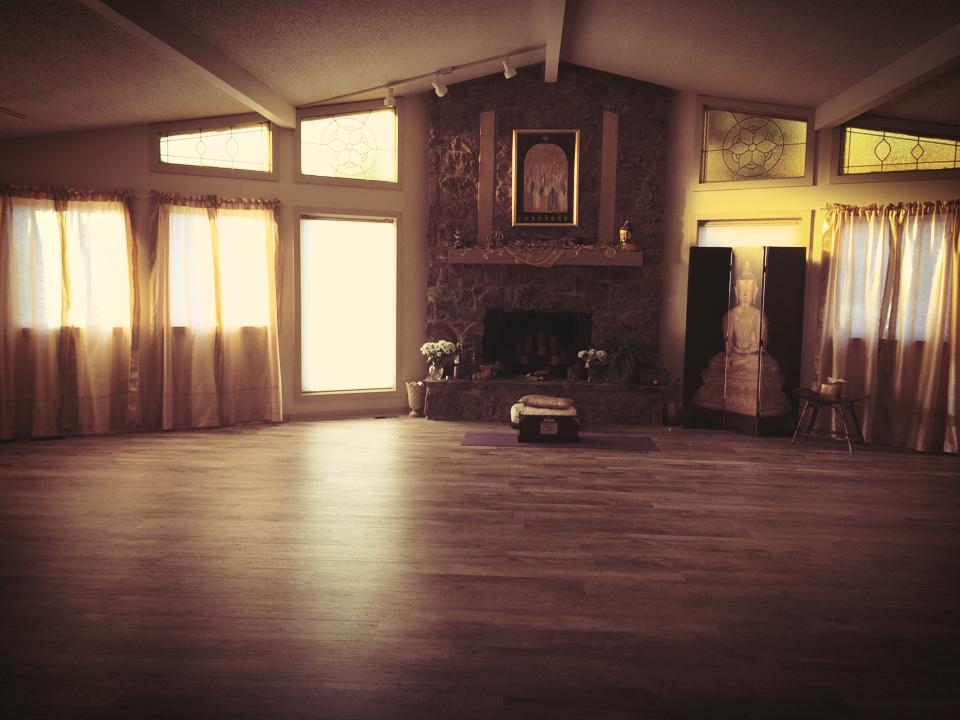
So I asked my longtime community of students and friends if opening a different kind of center would be something they would want. I wanted to be sure it would answer the cal for something that wasn’t being offered. The response was a resounding “yes.” But the truth is I had also just come through a devastating time in my own life that affected deeply my sense of myself as a teacher, with enough personal tragedy and trauma to have left me questioning whether or not I even wanted to teach anymore. Once again, I was at a crossroad between who I had been (as a teacher for 9 years at that point and as a woman) and who I was becoming. Part of me wanted to run away and start over, and part of me was ready to dig into my hometown and offer my community something different. Root was opened to be first and foremost a sanctuary for ALL bodies. You literally have to cross two thresholds to enter into the space, and it was built to nurture a feeling of being held. As is. The center is devoted to yoga as a conscious, embodied, spiritual practice (sadhana)—not just acrobatics in which you can check out and go on autopilot. The goal is to integrate what has been fragmented in belief, thought, speech, and action. And by “spiritual” we emphasize an embodied practice that connects you to something beyond your wavering thoughts and opinions. So, community (satsang) is central to our vision, as is service and scholarship. Rather than focus solely on asana, Root seeks to support the whole person, the whole practice, and the whole lifeline. My goal is help students tap something deep within, something unshakeable, from which they can resource themselves and recalibrate center when life knocks them around. If you can know center, and really find steady ground there, than your circumference can expand and shift and move.
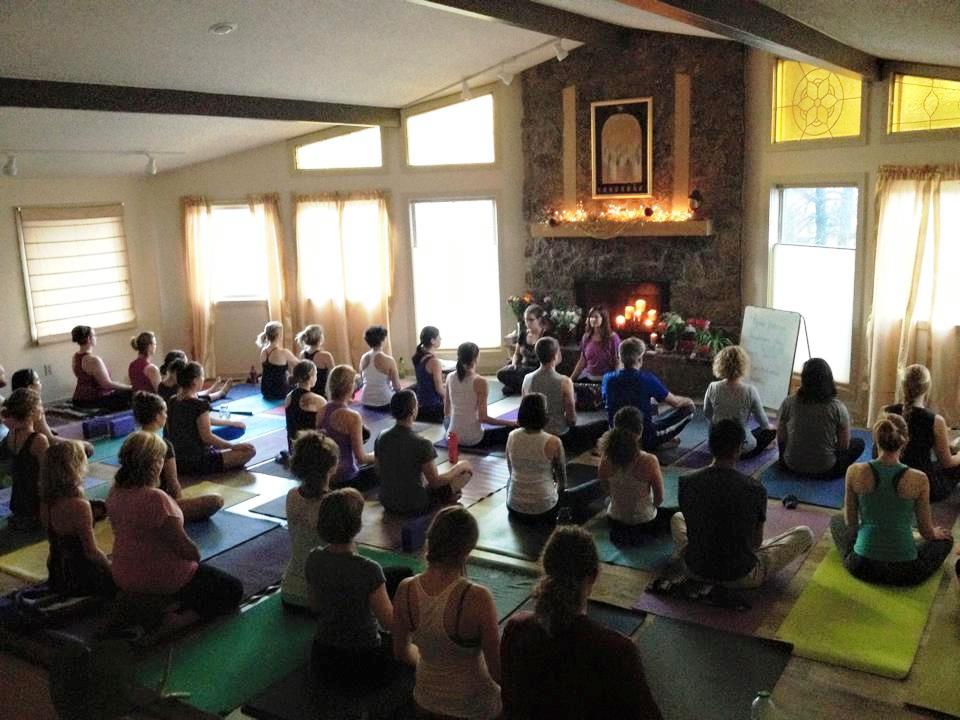
How did your major prepare you for the job, the life you have now?
I tell you what, my background in English has been integral to the work I do in Yoga. I learned along the way through my education in English that we are always reading and writing the world—outwardly and inwardly (onto our own bodies and belief systems). I learned to question the assumptions we make about what is center and what is margin and how we naturalize and codify certain behaviors and beliefs as “normal,” and cease to see how we are conditioned and habituated to perceive the world the way we do. I learned to question what was considered “The Truth” about who we are and to ask why and how any particular narrative gets privileged above others and universalized as “the way it is.” I learned to distinguish between habits and nature, to question whether something is inevitable or just really masterfully ingrained. As a student of nonfiction writing, I learned to pay exquisite attention to the details. I learned to listen, watch, and feel into the subtle spaces where the real stories are held.
In so many ways, I feel like I am doing the same work in Yoga as I did as a student of English and Women’s Studies. Yoga is a technology comprised of specific techniques and practices that essentially ask, “Who are you, really?” The practices reveal the inner stories with which we have aligned and postured ourselves and our lives. Stories like “I am not enough” or “I am not safe” are more than cognitive lines we repeat; they have an associated breath pattern and a physicality, they have emotional resonance and a ripple effect on how we relate to others. Because Yoga attends to more than just our intellect, it can help us redress and rewrite what we experience as Truth free ourselves from the most seductive or convincing stories that inhibit us in this world. Thus Yoga is arguably a way of rewriting our embodied stories of deficiency, brokenness, seeking, etc. It is a way of helping us clarify and reclaim our identity and agency in a world that too often seeks to exploit or homogenize our sense of ourselves. The practices help us come into our senses and literally revise—see in a new way what is writ large–the story of who we are. This is why one of the series of retreats I lead (including Summer 2014 with John Calderazzo guest teaching!) are called Rewriting Embodied Myths: A (w)Rite of Passage.
So, I think I am basically doing the same work I did as an undergrad, a grad student, and a teacher of writing; I am challenging identity and seeking ways to empower a more conscious and kind sense of ourselves.
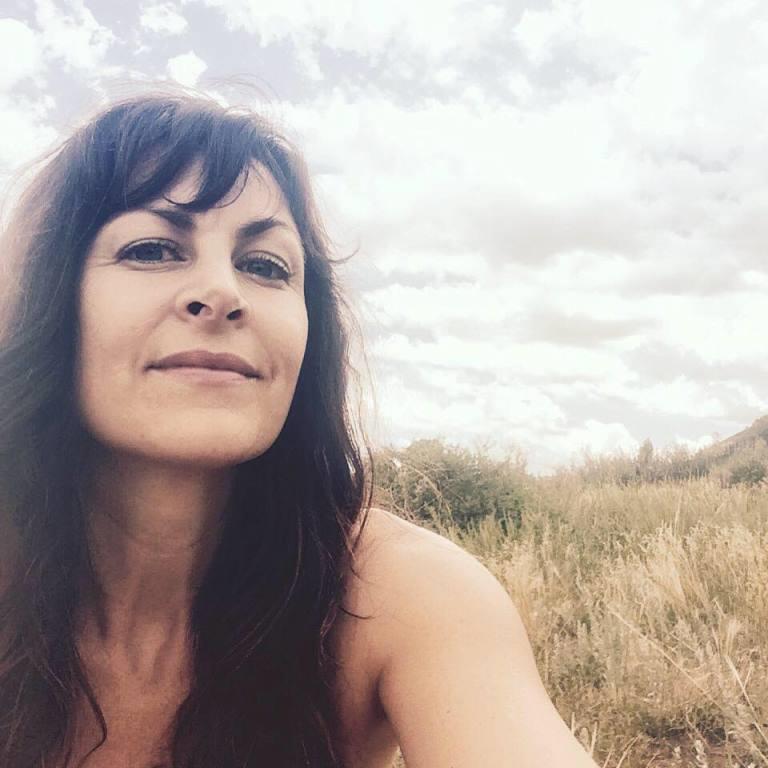
What do you consider to be your greatest accomplishments (both personally and professionally)?
Hmm. I fall inwardly silent on this one. I am not sure I can speak to a great accomplishment, but I can say something about the little blessings in a day. When I see a new student or client suddenly grasp that who and what they are is enough, that makes everything worth it. When the woman who is convinced she needs to lose weight suddenly grasps that what she is really after is a sense of belonging and support, that is a great accomplishment. When the man who finally lets himself grieve openly realizes most of his physical pain was connected to holding it all together/in, that is a great accomplishment. I love what I do, but I am not terribly attached to it staying the same. Maybe my great accomplishment is adaptability.
How did your experience in the English Department help you with these achievements?
Well, to add a bit to what I said earlier, I feel like my education in the English Department instilled in me a great capacity to see patterns and question hard lines in the sand. I can only help others identify where they are mired in old stories and habits because I have done that work myself, and everything I learned and explored at CSU helped me (in the words of Rilke) learn to live the questions. As much as my education frames and gives context to what and how I teach, it also informs who I am personally every day. I try to cultivate more awe and curiosity and let go of the need to have all the answers, and that began in my time there.
What did you like about the English program?
I loved my professors. I think across the board, as an undergrad and grad student there, I so appreciated the ways in which they inspired new thinking and new vision in me. Critical thinking became an emancipatory experience, freeing me from the resignation that things were necessarily or inevitably a particular way. And I think I found my own unique voice while there, and that voice was so supported and encouraged by great mentors in the program.
Why did you choose to study here?
As an undergrad, I basically chose CSU because I had hopped around schools and countries, and I was finally ready to just be in a place I loved. I was originally a double major Anthropology and English, but when I received a scholarship for my writing, I decided to just pursue English and the nonfiction writing I loved best. Once there, I loved it. After all the flitting around looking for the right program on paper, I found the right fit because I chose to prioritize my inner life and was met there by such stellar staff. The Women’s Studies program was also an essential part of my self discovery and focus as an undergrad and grad student. I returned to pursue my MA in 2002, because I wanted to focus on nonfiction writing and was delighted to be back.
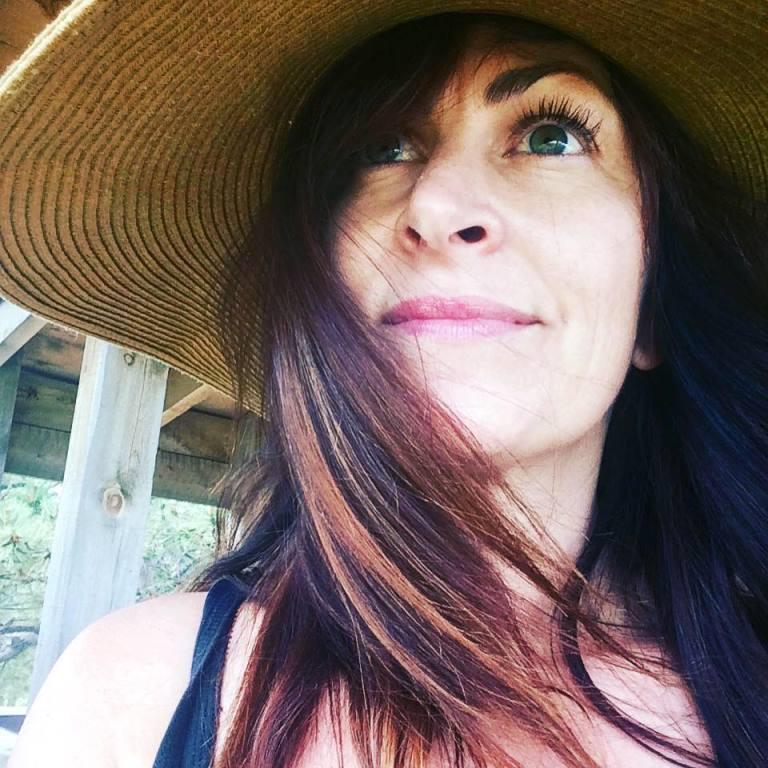
Do you have a favorite story from your time with the English Department? Was there a specific class, professor, advisor, or fellow student who made an impression on you, helped you, or inspired you when you were at CSU in the English Department?
Wow. I have a few snippets. I had so many great teachers and friends there.
I remember my first writing workshop with John Calderazzo, and he handed back this lengthy thing I had written about my complex relationship with my father. He had circled one line and put a star next to it and wrote, “THIS is the story.” I will never forget that and how it taught me that we so often have to sort through a lot of surface stuff before we arrive at the real story.
Paul Trembath’s classes completely changed the course of my thinking and my work. In the words of Emily Dickinson, “If I feel physically as if the top of my head were taken off, I know that is poetry. These are the only ways I know it. Is there any other way?” That was how I felt after those classes. Like something had been taken off and cleared out and I was able to see the poetry and dynamism of life in new ways.
As an undergrad, I was in the grad class for Virginia Woolf and wrote my first major paper on meaning being something that happens in the spaces between. I still pull that up online every now and then (The Matrix I think the online journal was called?), just to remind myself that this interest in how meaning is made has been a longtime passion!
I loved the early nonfiction workshops, before it became such a “thing.” I would be in class with 5 other people across such diverse life experiences rapping it out. It was so awesome to be with a firefighter, a single mom, and other nontraditional students whose insights and observations deepened all we did. Rebecca Skloot and I became friends and workshop mates at that time, and I have been so thrilled to watch her success with The Immortal Life Of Henrietta Lacks.
I was told once by one professor that my mind works in constellations and cosmos. It was a great compliment and it was also her gentle warning that my thesis was spiraling out in too many directions! I am still like that. 🙂
Do you still keep in contact with your classmates or professors?
I am fortunate to still be in touch with a few, including John Calderazzo (with whom I led a retreat and hope to collaborate again)and my thesis chair and advisor Sarah Sloane (whose support of my work those two years was medicinal). I enjoy watching some of my dear friends and colleagues (like JILL!) across the ethers of social media.
What would you like to tell prospective CSU English Department students?
It is a phenomenal program in which you can really find support for your passion, your voice, and your contribution to the world.
What advice do you have for current CSU English Department students?
Let the inquiry unravel you, and enjoy the infinite possibilities that arise when you let go of the idea that you are supposed to know a darn thing. Pay attention to what you pay attention to and let that direct your focus in a meaningful way.
Since graduate school, you have continued to write, including some blogging. What does your writing process look like now? Do you consider your writing a practice like yoga, or part of your yoga practice? Can you tell us about the book you are working on?
Writing is absolutely a part of my practice as a yogi, just as I said yoga is a practice of writing and revision. Writing is a place for me to meet aspects of myself that might not have as much air time in my daily life, and it is a supreme practice of self study. When I write, and I mean really write, that small self drifts off and something else starts to speak up. In yoga, the practice is to become more firmly established in that truer/higher/primordial self that isn’t mere ego or opinion or aversion. Our “goal” is to think from, speak from, and act from that space more often, more naturally, with less effort. When I write, I often feel like that ancient part of me is speaking, and it can help reveal and revise the egoic chatter of my fears, insecurities, preferences, and biases. Writing is a way of clarifying how beautifully complex and tenuous we are.
I am a haphazard and erratic blogger, but I did create a blog named afer my thesis, (Un)Becoming Human. It’s a place I pull threads and muse about things related to my work and life. But yes, I am working on a book and have been for a while. Whilst I have had the great support and unwavering encouragement of an editor and publisher in NYC, I find that my process is often waylaid by the busyness of life. In some ways I think I am such a disciplined person, but my writing is entirely messy and unpredictable. When I write, I will write for hours and hours and forget to eat or drink water. But then I might not write for weeks on end. I am trying to dedicate one morning a week to writing, but I have learned over the years that I am someone who balks with too much structure. So, I use whatever is on hand, or Facebook, blogging, and other forums to jot down things as they come, and I have someone helping me cobble all that together for the book.
The book is essentially a compilation of essays that trace observations from my practice and teaching over all these years. It is an inquiry into what it is to embody and live the ideas of Yoga in a real world way. Not as the great sage, and not as a practical How To manual. Rather, it is an exploration, drawing from my personal and professional experiences, of what this stuff means in our ACTUAL day to day lives—lives of loss and grief, delight and discovery, heartbreak and injury, celebration and lamentation. Each chapter navigates a particular aspect of yogic practice by expanding and digging in deeper to the implications and possibilities there. For example, the first chapter is Savasana, the corpse pose, because (as I said earlier) it is usually when something heretofore stable has fallen away that we really come into our practice. And that chapter opens with the recounting of seeing my father’s corpse in the viewing prior to his cremation and knowing without a doubt that he was no longer there, though the form was. I explore what death is in small ways and what it evokes in us. Or there is a chapter on standing one leg balances that sifts through the various physical and symbolic effects of poses like “tree,” wherein we learn to recalibrate when what was once stable shifts. In that chapter I look at the actual amputation of my great dane, Peanut; divorce as amputation, and the loss of my father. While most of it is done, it still needs some fluffing and shaping, and I am notoriously slow to get things done. I need to be pushed! However, I do have to say, I have learned and changed so much over the years, and what I would have said 7 years ago is very different from what I say now. So, I truly believe that this time has been a necessary maturation process for me to articulate and share far more meaningful stuff. But, you know…there is a certain point when you see it’s perfectionism that is holding you back, and I am working to share more (thus my use of Facebook, etc) and learn to let it go.
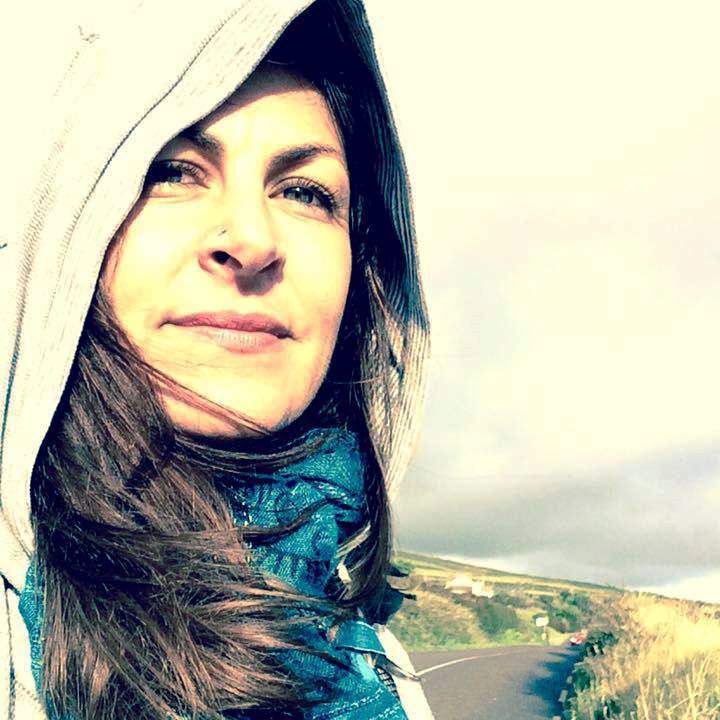
What are your hobbies or special interests, what do you enjoy doing with your free time?
I hike 5+ days a week. My time in the woods and my solitude are critical to my wellbeing and my work. I was raised a fairly feral kid, so I naturally gravitate to the wild for that sense of being lost and found. I love to travel in small and large circles, and of course I try to write whenever I have the time and space to settle in. These days, running a center and two training programs, meeting with clients and students, I seem to have woefully little “free” time, but I make it a point to take solitude and silence in wild places each week. My community of friends and family are amazing, so I spend a lot of time with my satsang—eating, laughing, celebrating life and sharing the sorrows.